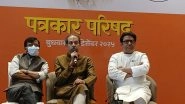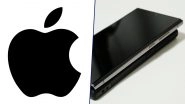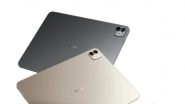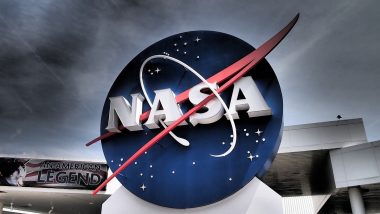Washington, September 30: US space agency NASA has selected four small explorer missions to conduct concept studies to expand knowledge of the dynamics of the Sun. These missions will aim to shed light on related phenomena such as coronal mass ejections, aurora, and solar wind to better understand the Sun-Earth connection.
“These four mission concept studies were selected because they address compelling science questions and could greatly impact the field of heliophysics,” said Nicky Fox, the associate administrator for science at NASA Headquarters in Washington. NASA Shares Mesmerising Image of 'Twin Galaxies' Located 300 Million Light Years Away From Earth (See Pic).
“These mission proposals are exciting because they build upon and complement the science of our current mission fleet, have the potential for broad impact and could provide new and deeper insight into the solar atmosphere and space weather,” Fox said in a statement late on Friday.
The Cross-scale Investigation of Earth’s Magnetotail and Aurora (CINEMA) mission would work to understand the structure and evolution of Earth’s plasma sheet -- a long sheet of denser space plasma in the magnetic fields flowing behind Earth, known as the magnetotail -- using a constellation of nine CubeSats flown in sun-synchronous, low Earth orbit.
The Chromospheric Magnetism Explorer (CMEx) mission would attempt to understand the magnetic nature of solar eruptions and identify the magnetic sources of the solar wind. Meanwhile, the Extreme ultraviolet Coronal Mass Ejection and Coronal Connectivity Observatory (ECCCO) consists of a single spacecraft with two instruments, a wide-field extreme ultraviolet imager and a unique imaging EUV spectrograph.
The primary objective of the Magnetospheric Auroral Asymmetry Explorer (MAAX) mission would be to improve our understanding of how electrodynamic coupling between Earth’s magnetosphere and ionosphere regulates auroral energy flow. NASA's Cassini Spacecraft Captures Stunning Visual of Saturn From About 746,000 Miles (See Pics).
“The potential to gain new insights and answer longstanding questions in the field while building on the research and technology of our current and legacy missions is incredible,” said Peg Luce, acting Heliophysics division director at NASA Headquarters.
(The above story first appeared on LatestLY on Sep 30, 2023 12:37 PM IST. For more news and updates on politics, world, sports, entertainment and lifestyle, log on to our website latestly.com).













 Quickly
Quickly












